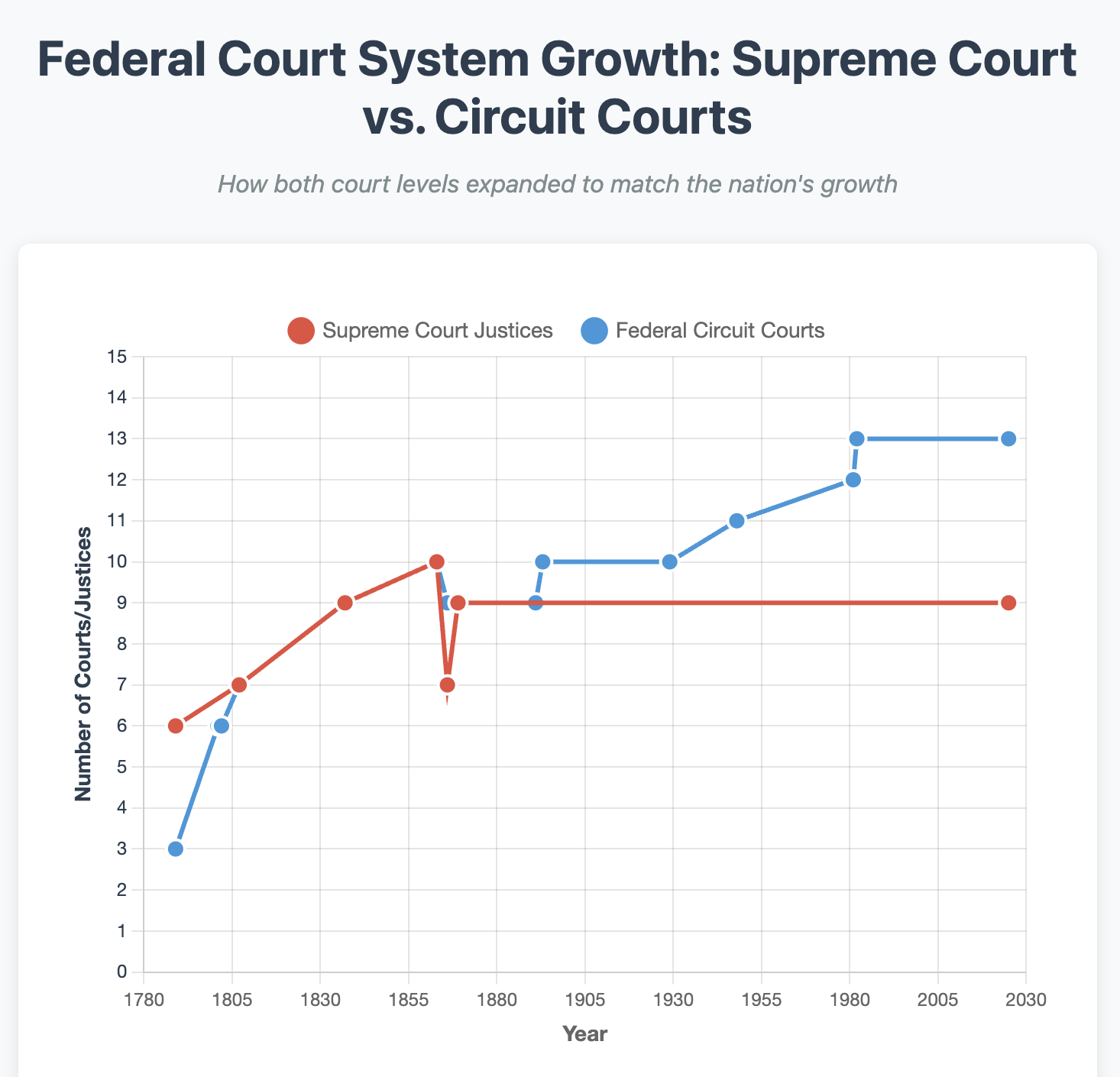Court Expansion: Actually Normal in American History
Whenever reform is discussed, critics cry that changing the Court would be “radical” or “unprecedented.” This is historically illiterate nonsense. The Supreme Court’s size has changed seven times in the nation’s first 80 years. The Judiciary Act of 1789 created a six-member Court. It grew to seven members in 1807, nine in 1837, ten in 1863, back to seven in 1866, and finally to nine in 1869. For most of American history, the Court’s size tracked with the number of federal circuit courts. But here’s what critics never mention: while the Supreme Court has remained frozen at nine justices since 1869, the rest of the federal judiciary has continued to grow dramatically to meet the nation’s needs.
The federal circuit court system started with just three circuits in 1789—the Eastern, Middle, and Southern circuits. Today, there are 13 federal circuits, representing a 333% increase.
Meanwhile, the Supreme Court has grown from six to nine justices, just a 50% increase over the same period.
This disparity reveals the absurdity of treating nine Supreme Court justices as sacred while accepting massive expansion everywhere else in the federal judiciary. If the nation’s legal complexity and population growth justified expanding circuit courts by more than 300%, why shouldn’t the Supreme Court grow proportionally?
The circuit court expansion didn’t happen all at once—it was a steady response to America’s growth. Congress created numbered circuits in 1801, added new circuits as states joined the union, and made major structural changes in 1891 with the Evarts Act, which created the modern appellate system. The most recent additions were the Eleventh Circuit in 1981 and the Federal Circuit in 1982.
At every step, Congress recognized that a growing, more complex nation needed more federal judges to handle the caseload. The Supreme Court is the only part of the federal judiciary that has been artificially frozen in time.

The most famous expansion effort came in 1937, when Franklin Roosevelt threatened to add justices to overcome the Court’s resistance to New Deal programs. FDR never got his expansion, but the threat worked—the Court suddenly started upholding his legislation in what became known as “the switch in time that saved nine.”
The idea that nine is somehow sacred is a modern myth. What’s actually radical is allowing a minority-appointed Court to govern against the will of the majority indefinitely while every other federal court adapts to serve the American people.
Other democracies regularly reform their high courts. Germany restructured its Constitutional Court after World War II. The United Kingdom replaced the House of Lords’ judicial function with a new Supreme Court in 2009. Canada’s Supreme Court operates with mandatory retirement ages. The idea that America’s system is perfect and unchangeable is American exceptionalism at its worst.